The Holy Cities of Hinduism
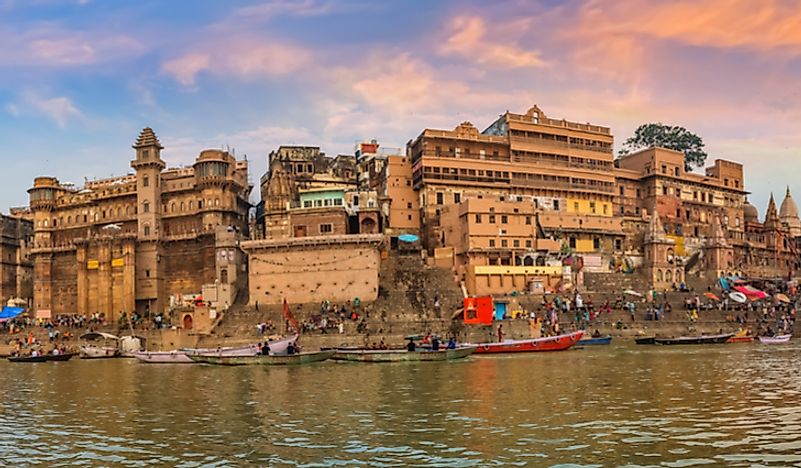
Holy Cities are places regarded as sacred by a particular religion due to significance attached to it. The importance is due to the city being the origin of that religion, its headquarters, mentor’s residence or the dwelling place of gods. The Hindu religion recognizes seven Holy Cities commonly known as the Sapta Puri. The cities are Ayodhya, Mathura, Haridwar, Varanasi, Kanchipuram, Dvaraka and Ujjain.
Ayodhya
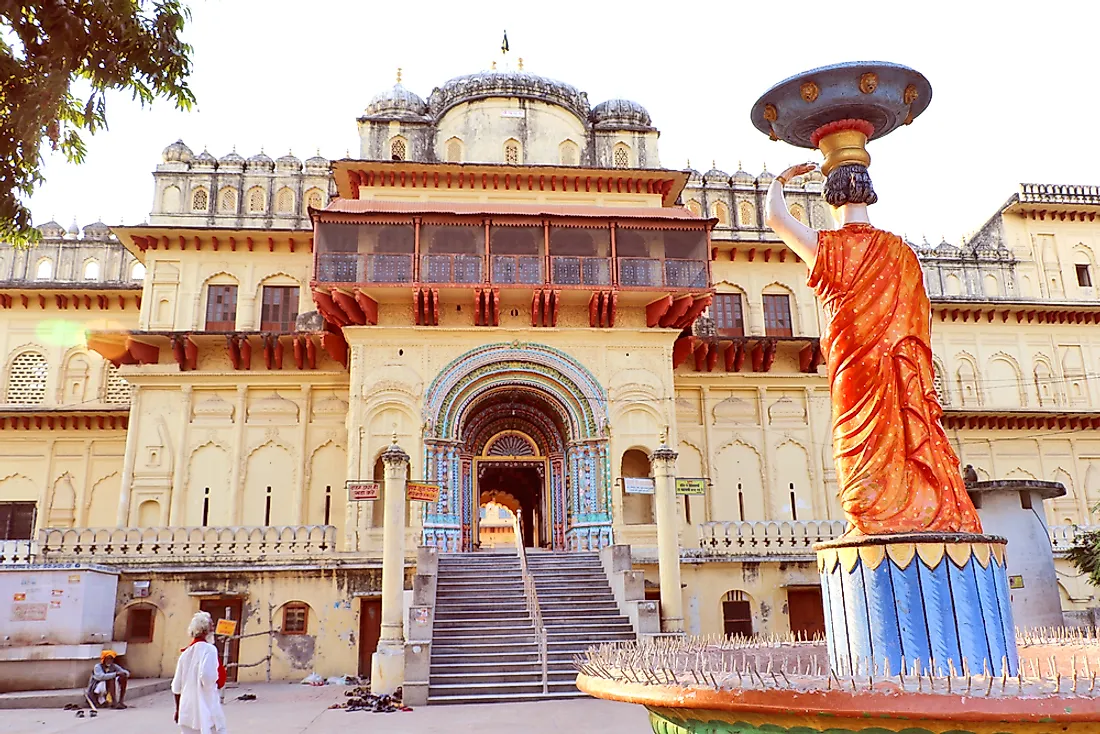
This Holy city is situated in Uttar Pradesh, India. This city is regarded as one of the seven vital sacred places and pilgrimage sites for Hindus. Hindus believe that Ayodhya is the birthplace of Ramachandra, the 7th avatar of god Vishnu who is regarded as a supreme being in Hinduism. Ayodhya is also considered to have special powers that make it unconquerable by the enemies. Ayodhya is considered sacred by Hindus because it holds numerous Hindus scriptures of great importance. It is believed that the city was built by God himself.
The principal venue of worship in Ayodhya is the Ramkot located on the western side of the city. Devotees flock to Ramkot during the celebration of the birth of Ram, a festival called Ram Navami. Ayodhya is a place with various sites of interest. The first site is the Hanuman Garhi which is the most famous shrine in Ayodhya. It is a huge fort with circular citadel at each corner and a temple of Hanuman. Hindus believe that any wish you make in this site shall be granted. The Nageshwarnath Temple is another sacred place established by the son of Rama called Kush. The temple was the only place of survival when Ayodhya was left until the time of Vikramaditya. The Shivratri festival is held in the temple. The Chakravarti Maharaj Dashrath Mahal is a place where Hindus believe that Dasharatha, the father of Rama, lived. The holy site is associated with Lord Ram, the epic of Ramayana who is an icon of truths, virtues, and devotion in Hinduism.
Mathura
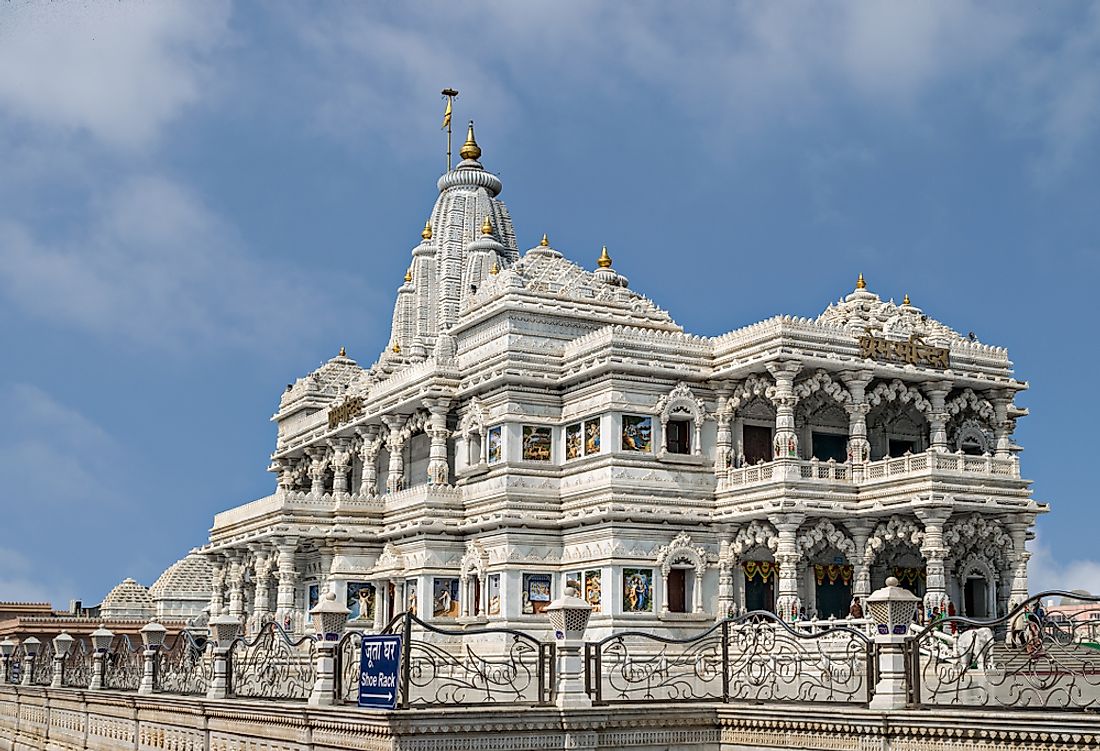
Mathura is a city situated in the North Indian state of Uttar Pradesh. It is nicknamed Krishnanagri because it is the city and birthplace of Lord Krishna. The Kesava Deo temple is a memorial temple constructed on the site where Krishna was believed to have been born. Mathura’s significance is accelerated by the fact that it was the headquarters of Surasena kingdom which was governed by Krishna’s maternal uncle called Kansa. Every August and March, Hindus converge in Mathura for festivals concerning Lord Krishna including Janmashtami and Holi. Several ancient and modern temples have been constructed here. The temples include Peepleshwar Mahadeo Temple, Birla Mandir, Yum Yamuna Temple, Vishram Ghat and Dwarkadhish Temple. Mathura is a significant city within the country as the Rasiya tradition is held here. The cultural activity includes folksongs describing Radha and Krishna Ji, the divine couple in Hinduism.
Hairdwar
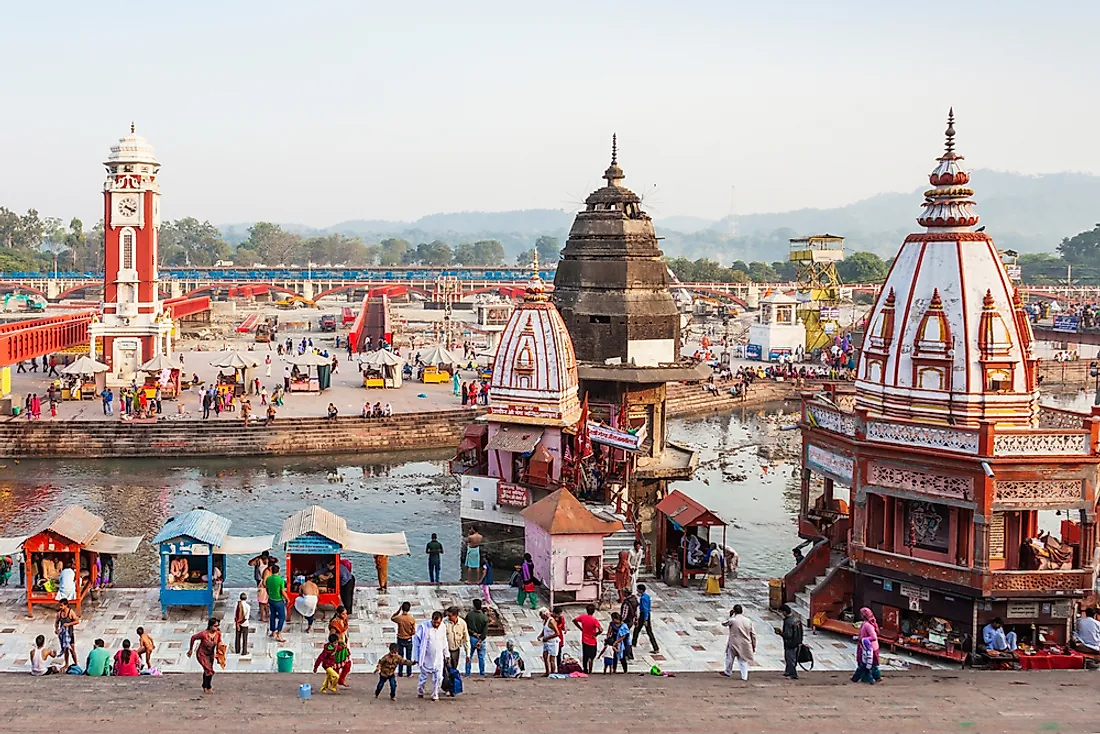
Haridwar has been a venue for pilgrims since ancient times. Hinduism teaches that Haridwar was one of the four places where drops of Amit (immorality) fell and spilled over as they were being carried by a bird known as Garuda. The city is therefore famous for the Kumbha Mela celebration that is held every 12 years. The festivals involve a congregation of devotees, tourists, and pilgrims along the Ganges river banks to take a bath. The ritual is believed to wash away all sins to attain a level called Moksha. Haridwar is the center for another event called the Kanwar pilgrimage. The pilgrimage involves the gathering of sacred water from River Grange and carrying it across to give it as offering to Siva shrines.
Other sacred pilgrimages held here are known as the panch Tirth which include Kushawart, Bilwa Tirtha, Neel Paryat and Gangadwar. Famous temples built in Haridwar are Kankhal, Piran Kaliyar, Maya Devi, Neel Dhara Pakshi, Pawan Dham and Bharat Mata Mandir. The city has grown due to Hinduism and other factors such as being an industrial center and an education hub. Famous shopping bazaars that sell various merchandise including devotional items and religious artifacts have been constructed.
In 1990 a huge temple was constructed in Jain architectural design with space to hold numerous idols. The Shri Chintamani Parschwanath Jain Scwetambar Mandir temple has a large dharmshala that can accommodate over 1000 pilgrims.
Varanasi
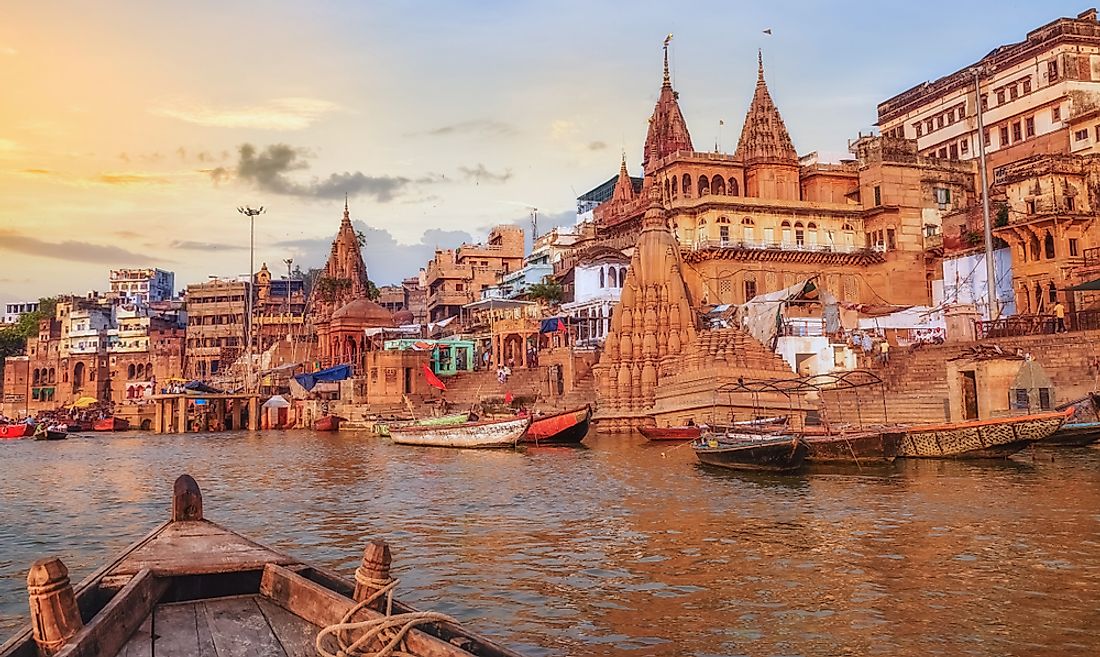
Varanasi is a major religious city located in Uttar Pradesh, North India. The importance of the city as a religious center occurred in the 8th century when worship of Shiva was established by Adi Shankara. The city has longtime been a famous city for pilgrimages, Hindu poetry, Hindu devotion and mysticism. Hindus believe that if one dies in the city, one automatically gets salvation. Numerous ghats or embankments made of steps of stones on the banks of the Ganges provide a venue for ritual ablution. Notable religious landmarks are Shri Vishwanath Mandir temple, which is ranked as one of the most important Hindu temples in the entire country. Other important temples include the Sankatmochan temple, the Durga temple, etc.
Dvaraka
Dvaraka was given its name by Krishna who is a major deity in Hinduism. Hindus normally congregate in the Dvaraka city in the month of August and September to celebrate the Janmashtami festival. This festival is celebrated to mark the birth of Krishna. Interestingly, the festivals are held during the night as it is believed that Krishna was born at midnight. Sermons and Bhajans are part of the festivities. At midnight, the pyramid is created and local boys climb it wearing costumes of Krishna. The purpose of climbing is to strike the hanging pot. The city also has a number of temples, they include Dwarkadhish Mandir, Iskcon Temple, Rukshamanee Mandir, Nageshwar Jyotirlinga Temple, and Gomati Ghat
Kanchipuram
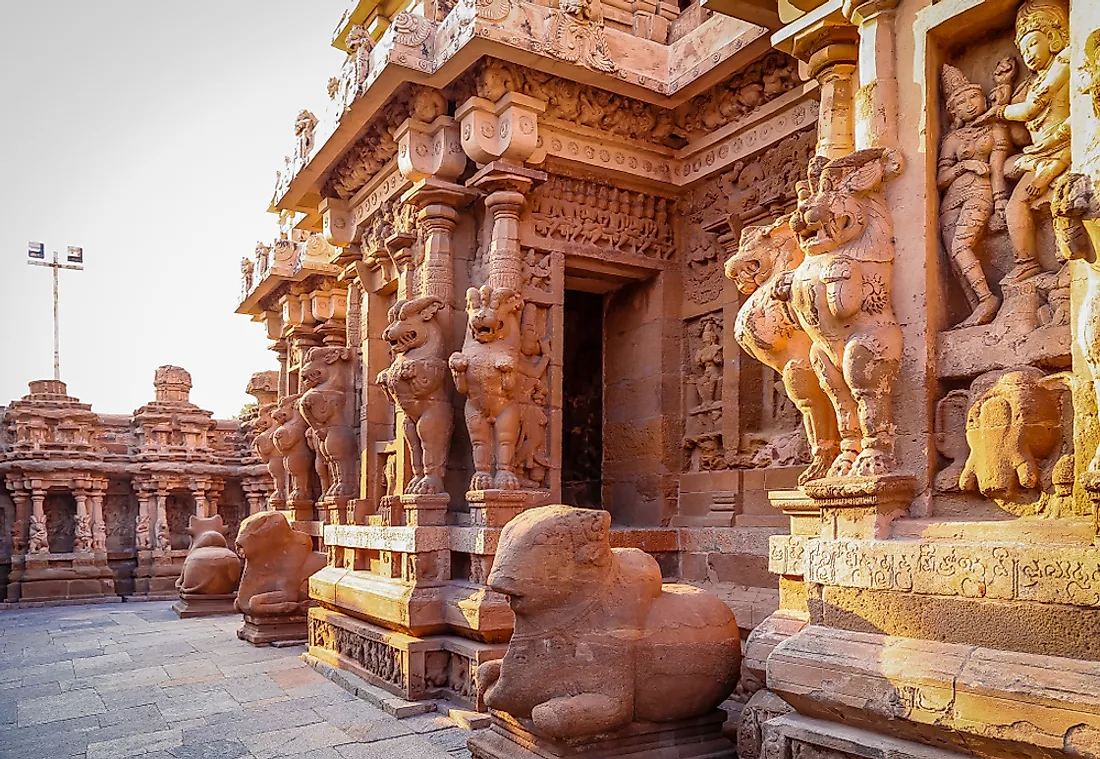
Kanchipuram is found in Tamil Nadu state in the Tondaimandalam region of India along the banks of Vegavathy river. The city is home to one of the oldest temples known as Kailasanathar constructed in the year 685. The city has several landmark temples such Varadharaja Perumal Temple, Kamakshi Amman Temple, Kumarakottam Temple and the Ekambareswarar Temple. Kanchipuram has a total of fourteen holy temples of the Hindu god Vishnu. Vaishnavites and Saivites have a pilgrimage site in the city of Kanchipuram. Ekambareswarar Temple is the most magnificent temple in the city dedicated to Shiva. Hindus regard this city as being Holy since it contains sculptures of goddess Parvati and carved lizards. The city also has several shrines where Hindus conduct worship. The shrines are housed in the temples with Vishnu depicted on them.
Ujjain
Ujjain is located in Madhya Pradesh state and is the largest town in Ujjain district. The city is a Hindu pilgrimage site and is one of the sites in the country where the Kumbh Mela is hosted. Chamunda Mata temple, Chintaman Ganesh temple, Gopal Mandir, ISKCON temple, Kal Bhairav temple, Mahakaleshwar Jyotirlinga and Mangalnath temple are some of the Hindu religious sites in Ujjain. The biggest temple in Ujjain is Chintaman Ganesh. It was constructed across the Kshipra river back in the 11th and 12th century. The Ganesha idol in the Chintaman Ganesh temple is held supreme as being swavamabhu (self-manifested).
Another attractive but holy site is Pir Matsyendranath. The spot is on Shipra river's bank and dedicated to the spiritual leader of the Nath sect of Shaivism-Matsyendranath. Ujjain has sacred trees such as the Banyan tree that grows on the banks of Shipra river in Siddhavat.











